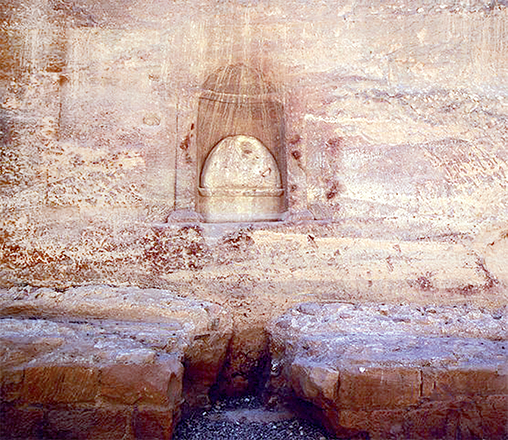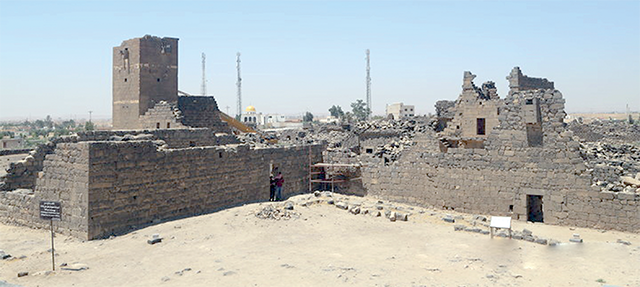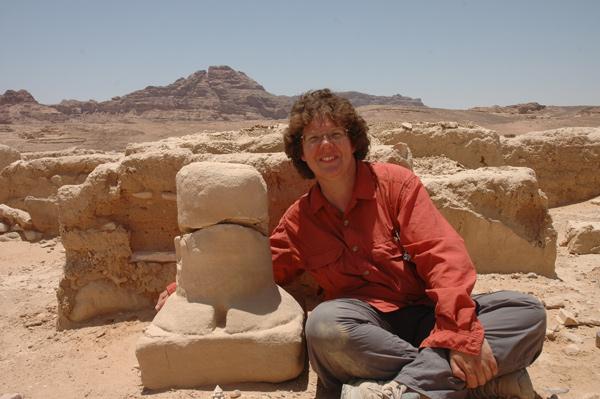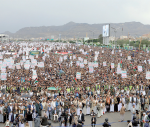You are here
Lasting Legacy of Nabataean Dushara: From Petra’s temples to all corners of Roman Empire
By Saeb Rawashdeh - Jan 19,2024 - Last updated at Jan 19,2024

Petra, Siq, ‘Dushara of Adra’a’ betyl (Photo courtesy of ACOR)
AMMAN — The Roman Empire embraced religious syncretism (an amalgamation of different religions), and Roman historians consistently showed a vivid interest in “Oriental religions”, particularly the unfamiliar Greek gods and Oriental cults, such as Mithras, Dea Syria or Jupiter Dolichenus.
Those cults travelled westwards to every corner of the empire, but closer scrutiny often reveals a paradoxical situation: In contrast to Rome and the West, the evidence in the Near East itself, the presumed heartland of these cults, is often surprisingly meagre and frustratingly different from what one is used to finding elsewhere.
“Literary sources are usually in short supply, and religious texts, in the form of prayers, liturgies, scriptures or votive offerings are largely absent.
The only type of inscriptions abundantly attested are epitaphs, which can at best throw an indirect light on local religious life through the use of theophoric names,” noted Andreas Kropp from the University of Nottingham, adding that the visual evidence of numerous “Oriental” gods plays a crucial role in exploring areas that textual sources cannot reach.
Among the media testifying about them, coins and divine iconography help to elucidate the role and character of these gods by allowing us to observe parallels, convergences and borrowings of types, motifs and attributes from other gods.
Assimilated with Zeus, Dushara was considered the supreme god of the Nabataeans.
“Attested in many inscriptions in Nabataea and beyond, all the way to the Gulf of Naples, the prosperity of this cult did not cease with the end of the Nabataean monarchy [AD106], but continued without interruption into the Roman period,” Kropp noted, adding that several cities of the Roman province of Arabia, namely Bostra, Adraa and Kharakmoba (Kerak) depict Dushr on their coins in the 2nd and 3rd centuries AD.
Though these testimonies belong to the Roman period, it is clear that he originally is a Nabataean god.
“Dushr is likely to be the deity worshipped in Petra’s main temple, the Qar Al Bint. Alternative interpretations appear much less plausible: Freyberger identifies Helios as the god of the Qar, based on a metope with a Helios bust, but the relief is merely one of a series of busts from the Doric frieze, of which two defaced ones are still in place, “Kropp underscored.
Ancient scribed said: “This is the god Ares in Petra, Arabia. . .
The image [of the god] is a black stone, rectangular, unhewn, four feet tall and two wide. It stands on a base of gold. To this stone, they sacrifice and pour on it the blood of the animal victims.”
In this account, the cult image of Dushara was a betyl. Betyl is a sacred stone worshipped in the ancient Semitic, pre-Monotheistic traditions.
Furthermore, a colossal hand of white marble found in the Qar Temenos during excavations in the 1960’s was long thought to belong to a statue of Dushara, but has been identified, to a statue group of Marcus Aurelius and Lucius Verus, Kropp said.
“Dushara was also the patron of the Nabataean royal dynasty and that connection explains the prominence of the Nabataean royal house in the perimeter of the Qar,” said Kropp, adding that the oblong Qar Temenos was adorned with an entire portrait gallery of Nabataean kings and thus transformed into a stage for royalty.
All the statues set up at the time of the Nabataean kingdom represent members of the royal dynasty.
Also across the kingdom, several dedications set up by third parties pledge their devotion to Dushara “the god of ours”.
However, such a formula appears unexceptional, as countless tribes and individuals laid claim to particular divinities with formulae like “the god of X” the scholar explained.
Dushara was compared to a son god and it goes back to Strabo who claimed that the Nabataeans prayed to the Son.
“The worship of Dushr extended to the northern edge of the former Nabataean kingdom, including the southern parts of the auran around Bostra. Several dedications and various priesthoods at Imtan, Bostra and Umm Al Jamlattest his cult, as well as theophoric names formed on Dushara,” Kropp underlined.
Related Articles
AMMAN — Located near Mafraq, Umm Al Jamal is another ancient Nabataean site that has continuous occupation during Roman, Byzantine and Islam
AMMAN — Within Nabatean polytheism, the importance of the Nabatean god Dushara increased with the political and economic development of the
AMMAN — The Nabataeans established a town at Humayma, some 240km south of Amman, in the first century BC, and the first phase of a shrine ex



















